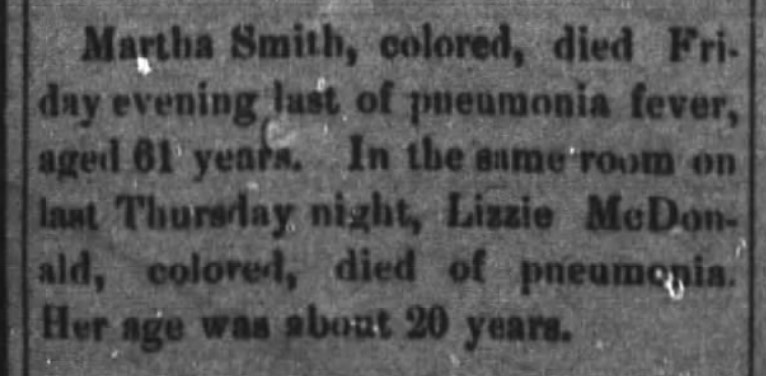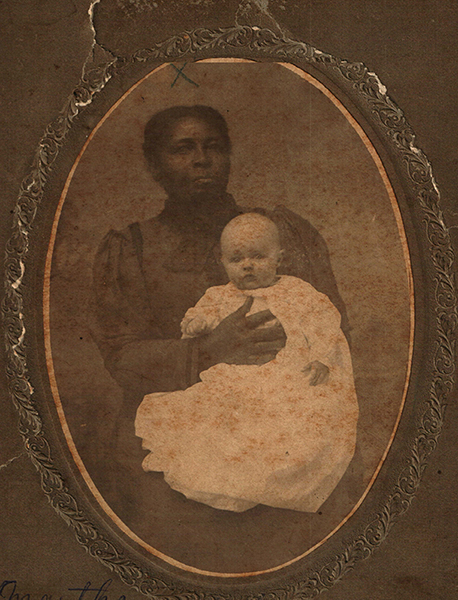Martha, Lizzie, and the Words They Use for Us
While searching for information on the history of New Hope Methodist Church from the 1940s and earlier, I stumbled upon an unexpected find.
I had accumulated a very short list of previous ministers at the church by searching newspapers on Newspapers.com. While searching, I used combinations of words like “New Hope Church,” “New Hope Methodist,” and the ministers’ names to learn more.
Partly out of frustration and partly out of genuine curiosity, I started searching for the word “colored.” Why not use a term their oppressors used to describe them? Franklin was a very small town back then, with a population of 835 in 1903 and an even smaller Black population.1 Maybe if I searched for that disparaging word, it might refer to one of the Black folks who lived there. And one of them was bound to have a connection to the church.
And what do you know? I did find a couple of incredible articles on the church (I’ll share more on that another time). But what I didn’t expect to find was a death notice for not one, but two ancestors.
A small, unassuming paragraph in a December 1903 issue of The Franklin Press says the following:

Martha Smith, colored, died Friday evening last of pneumonia fever, aged 61 years. In the same room on last Thursday night, Lizzie McDonnell, colored, died of pneumonia. Her age was about 20 years.
Okay, let’s break down what this paragraph tells us.
We have a couple of people (Martha Smith, Lizzie McDonnell), confirmation of their race (“colored”), their ages (61 and 20, respectively), what they died of (pneumonia), and when (“Friday evening last” and “last Thursday night”).
There’s a “Martha Smith” in my family. She was my 4x-great grandmother (Carrie‘s grandmother). She was born in November 1843. 2
There’s also a “Lizzie McDonnell” in my family. She was my 2x-great aunt (Carrie’s sister). Lizzie was born in May 1883. 3

So, how do I know these are my ancestors? Let’s dig a little deeper.

- Martha is 61 years old at the time of her death. This lines up with my Martha Smith’s estimated birth year: 1843. 5 6
- The article states that Lizzie McDonnell was 20 years old at the time of her death. She was born in May 1883– this would put her at 20 years old in December 1903.
- Martha died in the same room as Lizzie. 7 This means that the Martha in this article either knows or is being treated by the same person who is treating Lizzie McDonnell. It’s also possible she knows Lizzie. The Lizzie McDonnell in my family was my Martha Smith’s granddaughter.
- Both Martha and Lizzie are living in the same home in 1900. Other members of the household include Martha’s daughter (Luvenia), son-in-law (James), and grandchildren (Emma, Lizzie, Maggie, Aline, Harris, Frank, and Leona).
- I have not found records for Lizzie or Martha after 1900. Both of them disappeared from the home in the 1910 Census. 8
- Carrie Stewart said that her grandmother “died on Christmas Day.”9 According to the newspaper article, Martha died “Friday evening.” Working backwards from the date the newspaper issue was published, Friday would have been Christmas night. This means Lizzie died on the night of Christmas Eve.
Dec 30, 1903 – Wed
Dec 29, 1903 – Tues
Dec 28, 1903 – Mon
Dec 27, 1903 – Sun
Dec 26, 1903 – Sat
Dec 25, 1903 – Fri (Martha’s death)
Dec 24, 1903 – Thurs (Lizzie’s death) - Finally, both individuals are noted as “colored.” In all records where I have found Martha and Lizzie, they are noted as “Black” or “Mulatto.”
Isn’t it ironic? The words that were meant to subjugate our people and the methods used to segregate them can often times do what their oppressors never expected: help their descendants recover their stories.
- The Franklin Press, December 30, 1903.
- “United States Census, 1900”, database with images, FamilySearch (https://www.familysearch.org/ark:/61903/1:1:MSBM-WHX : 7 January 2022), Lizzie McDonald in entry for James McDonald, 1900.
- Ibid
- Ibid
- “United States Census, 1850,” database with images, FamilySearch (https://www.familysearch.org/ark:/61903/1:1:M4B8-L2K : 24 December 2020), Ruffin Stuart, Macon, North Carolina, United States; citing family , NARA microfilm publication (Washington, D.C.: National Archives and Records Administration, n.d.).
- “United States Census, 1860”, database with images, FamilySearch (https://familysearch.org/ark:/61903/1:1:MDDY-SXN : 18 February 2021), Martha Steward in entry for Canaro D Smith, 1860.
- 1903. “Local Snapshots.” The Franklin Press, December 30, 1903.
- “United States Census, 1910,” database with images, FamilySearch (https://familysearch.org/ark:/61903/1:1:MLSV-5KJ : accessed 24 January 2023), Frank Mcdonnel in household of Lulla Mcdonnel, Franklin, Macon, North Carolina, United States; citing enumeration district (ED) ED 111, sheet 7B, family 119, NARA microfilm publication T624 (Washington D.C.: National Archives and Records Administration, 1982), roll 1121; FHL microfilm 1,375,134.
- Wigginton, Eliot. 1979. Foxfire 5: Ironmaking, Blacksmithing, Flintlock Rifles, Bear Hunting. Anchor Books.
Excellent research, this opens one more door in our family in North Carolina and provides additional connections our family history.